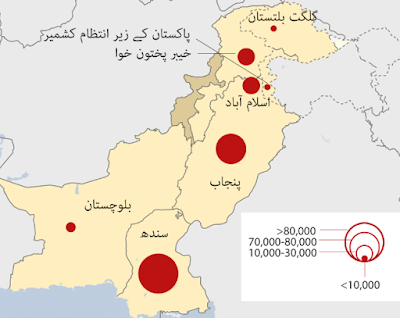Women and their role in the Development of Societies
If there is a topic that has been profusely addressed and analyzed in the field of development in all countries of the world, it has undoubtedly been that of gender and specifically the role played by women in improving socio-economic and political conditions of societies. It is true that the reality of women is different depending on the geographical location in which it is located. The great variety of countries that make up the planet causes us to find multiple models applicable to the situation in which a certain woman finds herself. Each country regulates gender issues differently, in such a way that women are more or less integrated or separated from society and depending on the socio-cultural structure of each society. Generally, there is usually a co-responsibility between a better situation of women in developed countries versus a situation of greater discrimination in developing countries. The role of women in each of the societies depends on many factors that condition their lives, such as culture, traditions, religion, etc.

The role of women has been confined, from the beginning of the construction of society, to the strictly family sphere. Progressively, women will take on other roles in the public sphere after the demands made to achieve progress in the conquests that the other gender, men, were acquiring according to the evolution of the world itself. Women in developed countries have been incorporated into the development of their countries as a result of a constant search and longing to obtain equality with men, while maintaining respect for diversity. Women have been aware that their incorporation into society cannot be carried out through a policy of displacement that would have resulted in a frontal rejection of their positions.
The struggle of women in developed countries originated thanks to the progressive access of women to formal education, a fundamental platform that provided them with a very powerful weapon of training and information through which they channeled their aspirations and social and political demands in this way. as its integration in the labor market. This access has allowed the start of the process and, although there is still a long way to go, the long distance has placed women if not on an equal level with men, but at levels of equality much higher than those maintained in past times . Women's autonomy begins with their economic independence, a key element for the enjoyment of other rights, which is why the integration of women into the labor market is essential, even when there are still highly controversial aspects such as equal pay for the same position held and the reconciliation of work and family.
Regarding equal pay, despite the fact that progress has been made, there is still much to achieve equality, according to the International Labor Organization (ILO), indicating that the average wages of women are between 4 and 36% lower than men's, and the wage gap increases in absolute terms for women who earn more. In Europe the wage gap between men and women is 19% and it almost doubles in the United States with 36%. In Spain a woman receives 17% less salary than a man for doing the same job, despite the fact that she has a better education and is better trained. But if human capital factors were taken into account, that is, what makes an individual objectively productive in the labor market, such as educational level, experience, occupation, professional category, rural or urban environment, as well as the months worked per year and the hours worked per week, this woman should earn 2% more than the man.

Focusing this study in Spain, this part cannot be explained based on objective factors, but is due to pure discrimination. The ILO in this report recognizes their inability to explain why women, even though they enjoy much higher education and training than men and show similar values in the rest of the human capital factors, are these, men, who earn the most in all sectors and in all salary scales .
The ILO recognizes that if the reduction in the wage gap between men and women continues at this rate, it will still take 71 years to eliminate it. Also among the women themselves differences are seen depending on whether they have children or not. The World Report on Wages concludes that society penalizes maternity, not only in wages with an average of 5% in Spain, but also that the more children a woman has, the less salary she will receive in relation to men and women without offspring. However, the opposite occurs with men: the more children a man has, the more earnings he receives. It can also be concluded that the wage gap is reduced if the working mother has girls instead of boys: it is assumed that girls can help more with household chores and free the mother to work longer hours.
Regarding work and family reconciliation, the following paradox occurs: although women have entered society and the productive world, once that step has been reached, they continue to assume the family burden. The challenge facing these societies today is to reconcile both life, work and family, for both men and women. Thus, a more equitable distribution between both sexes will be favored and this will contribute to real equality. Another relevant aspect to focus on in the analysis of gender and development realization is the one referring to women's leadership and political participation. Women are underrepresented not only as voters, but also in leadership positions, whether in elected office, in public administration, the private sector, or academia.
This reality contrasts with their undoubted capacity as leaders and agents of change, and their right to participate equally in democratic governance. Women face two types of obstacles when it comes to participating in political life. On the one hand, the structural barriers created by laws, and on the other, the discriminatory institutions that continue to limit the options that women have to vote or stand for election. Capacity gaps make women less likely than men to have the education, contacts and resources to become effective leaders .
As the resolution on the participation of women in politics adopted by the United Nations General Assembly in 2011 points out,
“women continue to be largely marginalized from the political sphere worldwide, often as a result of discriminatory laws, practices, attitudes and gender stereotypes, low levels of education, lack of access to health care services and the poverty that affects them disproportionately ”.
It is interesting to emphasize some data on this issue published in 2015: only 22% of all national parliamentarians were women, which means that the proportion of women parliamentarians has increased very slowly since 1995, when it stood at 11, 3%; 11 women were Heads of State and there were 13 Heads of Government . Rwanda is the country in the world with the highest number of female parliamentarians (63.8% of the seats in the lower house) [12]. Globally, there were 37 states where women represented less than 10% of all members of parliament in individual chambers or lower houses, including 6 chambers with no women at all. Only 17% of the ministerial positions were held by women, and most of them were in the social sectors, such as education and health .
In general, it is considered that the “critical mass” with respect to the representation of women stands at 30%, which means affirming that 41 countries had reached this reference percentage, of which 11 are in the African continent and 9 in Latin America. Contrary to popular belief, the presence of more women in politics is not correlated with lower levels of corruption. Rather, there is a correlation between democratic and transparent political systems and reduced levels of corruption. Both elements in turn create an environment conducive to increased participation by women.
If the situation in developed countries is far from achieving equality, as can be seen, in developing countries the reality is much more complex. These countries are not only conditioned by the lack of economic development, but culture, idiosyncrasy and traditions greatly condition society and its structure.
In these countries, women focus their efforts on the reproductive sector and on the informal economy, perform all family care and contribute to family support from the emotional and cooperative point of view with men, but are excluded from decision-making both within the family and community, in addition to being excluded from participation in the public sphere in most cases. In these societies, women do not have access to formal education, as there are very high illiteracy rates (around 70% correspond to women), so illiteracy still has the face of a woman, and this fact causes what it supposed For most women in developed countries, a starting point towards achieving integration in their societies and the fight to achieve equal rights, in these Third World countries it continues to be a brake on achieving this.
Women represent just over half of the world's population, but their contribution and female participation in the labor force has remained below that of male participation. Women do most of the unpaid work, and when they are in paid employment, they are over-represented in the informal sector and among the poor.
The challenges of growth, job creation and inclusion are closely related. While growth and stability are necessary to provide women with the opportunities they need, women's participation in the labor market is also part of the growth and stability equation. Granting better opportunities for women can also mean achieving greater economic development in developing economies, for example through increasing the number of girls enrolling in school.
The application of policies that correct distortions in the labor market and create a level playing field will offer women the opportunity to develop their potential and participate in economic life in a more visible way.
Faced with this reality, various approaches to public strategies and policies have been used to advance towards gender equality and strengthen the role of women. Gender equality is essential to improve the economic, social, political and cultural conditions of society as a whole, and it also contributes to achieving a more comprehensive citizenship to strengthen democratic governance. Achieving gender equality is a challenge for all societies and their governments, so much so that within the Millennium Development Goals is the objective of promoting Gender Equity and the Autonomy of Women (MDG 3).
To achieve these objectives, it is necessary that problems such as poverty, lack of access to education, health services and the absence of opportunities for employment and productive work cease to affect mainly women. It is also unavoidable that the pertinent means to develop the same capacities, opportunities and security are formulated and structured, reducing their vulnerability to violence and conflict, so that both men and women have the freedom and the ability to choose. and decide strategically and positively about their living conditions.
As noted above, gender equality conditions differ markedly from developed to undeveloped societies, although it is true that despite the achievements of the former, gender equality has not been achieved. In developing countries, gender inequality is a constant in the dynamics of the functioning of society, and women become the most vulnerable and discriminated group in these countries. If you really want to make progress in development, it is necessary to incorporate both genders in this process. If women continue to be relegated to the background, without improving access to the various sectors of the country's social, economic, political and cultural life, development will be condemned to become an unattainable goal.






Comments
Post a Comment